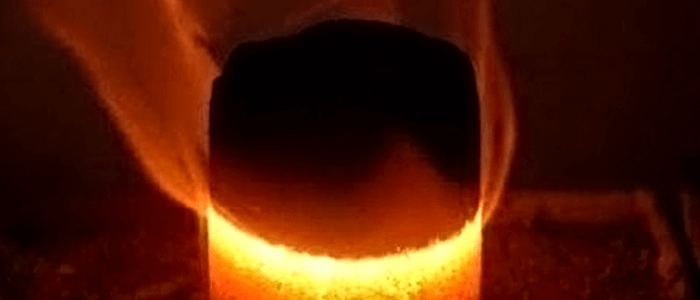In the casting process, the runner system is a key component connecting the molten metal and the mold cavity, and its design quality directly affects the molding effect and final performance of the casting. The runner system is not only responsible for introducing the molten metal into the mold cavity, but also undertakes important functions such as controlling metal flow, reducing defects, and optimizing the solidification process. This article will analyze the composition, function and design points of the casting runner system in detail.
Main components of the runner system
The runner system is usually composed of the following parts, each of which has its unique function and role:
Pouring Cup
The pouring cup is the starting part of the runner system, usually located at the top of the mold, and its shape is mostly funnel-shaped. Its main function is to receive the molten metal poured from the furnace or ladle, and reduce the impact and oxidation of the molten metal through its design. The reasonable design of the pouring cup can effectively avoid the splashing of molten metal and the entrainment of gas, thereby improving the surface quality of the casting.
Sprue
The sprue is a vertical channel connecting the pouring cup and the runner, responsible for guiding the molten metal from the pouring cup to the runner. The cross-sectional shape of the sprue is usually circular or elliptical, and its size needs to be reasonably designed according to the size of the casting and the flow rate of the molten metal. If the sprue is too small, the molten metal will flow too fast, which may cause turbulence; while if the sprue is too large, the molten metal may cool too quickly, affecting the filling effect.
Runner
The runner is a horizontally distributed channel responsible for distributing the molten metal from the sprue to multiple ingates. The cross-sectional shape of the runner is usually trapezoidal or circular, and its design needs to ensure that the molten metal can flow smoothly and avoid turbulence or eddy currents. The length and cross-sectional area of the runner need to be optimized according to the complexity of the casting and the fluidity of the molten metal.
Gate
The ingate is the part of the runner system that is directly connected to the casting cavity, responsible for controlling the speed and direction of the molten metal entering the cavity. The size of the ingates is usually small to ensure that the molten metal can fill the cavity smoothly and evenly. The design of the ingates needs to avoid the molten metal directly impacting the cavity wall to prevent surface defects of the casting.
Riser Sleeve
The riser sleeve is an important supplementary part of the runner system and is usually located in the thick and large part of the casting. Its main function is to provide additional molten metal to the casting to compensate for the shrinkage generated during solidification and prevent defects such as shrinkage cavities and shrinkage. The design of the riser needs to ensure that its solidification time is later than the main body of the casting to ensure the shrinkage compensation effect.

Key points of the runner system design
The design of the runner system is the core link in the casting process, and its design quality is directly related to the molding effect and performance of the casting. The following are several key points in the design of the runner system:
Smoothness of metal flow
The design of the runner system needs to ensure that the molten metal can flow smoothly to avoid turbulence, eddy currents or oxidation. Turbulence can cause gas and impurities to be drawn into the molten metal, thereby forming defects such as pores and slag inclusions in the casting. Therefore, each part of the runner system needs to adopt a smooth transition design to reduce the flow resistance of the molten metal.
Control of solidification sequence
The design of the runner system also needs to consider the solidification sequence of the molten metal. The ideal solidification sequence is to gradually solidify from the far end of the casting to the gate direction, which can effectively avoid defects such as shrinkage cavities and shrinkage. By reasonably setting the riser and adjusting the runner size, the precise control of the solidification sequence can be achieved.
Design of the exhaust system
In the process of molten metal filling the cavity, the air in the cavity and the gas in the sand mold will be squeezed by the molten metal. If it cannot be discharged in time, pores will be formed in the casting. Therefore, the design of the runner system needs to include a reasonable exhaust channel to ensure that the gas can be discharged smoothly.
Material selection of the runner system
The material selection of the runner system depends on the type of casting process. In sand casting, the runner is usually made of molding sand and is integrally formed with the casting mold; while in metal mold casting, the runner is mostly made of metal materials and can be reused. The advantages of metal mold runners are high temperature resistance and long life, but their manufacturing cost is high and they are suitable for mass production.
Summary
The runner system is an indispensable and important part of the casting process, and its design quality directly affects the molding effect and performance of the casting. By rationally designing the pouring cup, sprue, runner, ingate and riser, the flow, solidification and exhaust process of the molten metal can be effectively controlled, thereby reducing casting defects and improving product quality. In actual production, the design of the runner system needs to be optimized in combination with the shape, size and material properties of the casting to achieve the best casting effect.
In short, the runner system is not only a channel for the molten metal to enter the cavity, but also a key link in quality control in the casting process. Only through scientific design and fine optimization can high-quality and high-performance castings be produced.


